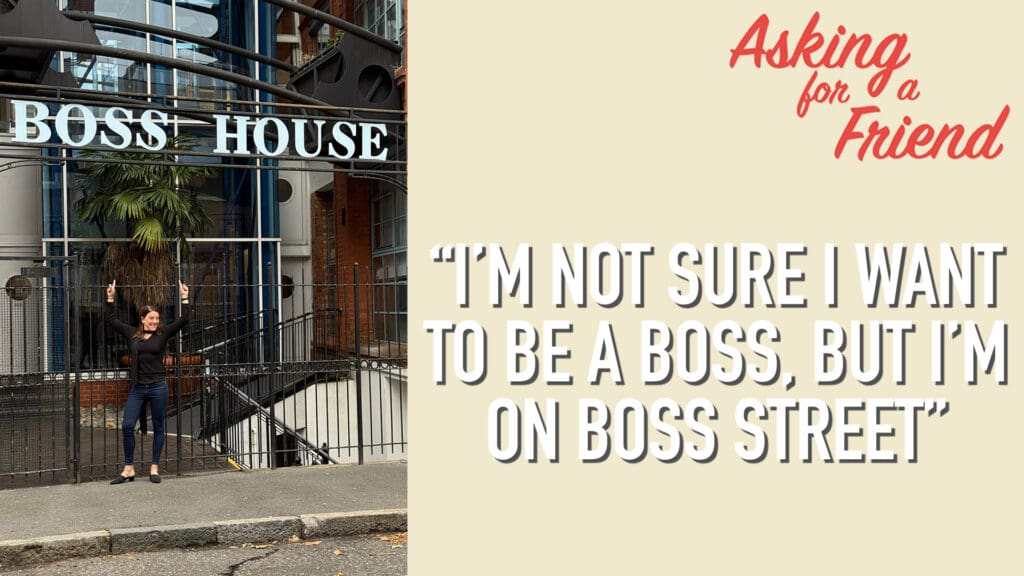My phone rang, “Karin, she’s here …”
“Crud, just what we needed today! Bad MBWA. Aghhh. You know the drill, warn the others. I’ll let John (my boss) know.”
John picked up the phone, “Okay, is your team ready? Remember there’s no such thing as a good executive visit with her, let’s just keep it from being a bad one. We don’t need the team distracted, we’ve got important work to do. We don’t need any more fire drills.”
“We should really let her know that her visits are backfiring,” I said, trying to solve this problem once and for all. I was a big fan of “no diaper genie,” even back then, “No way,” John warned. “She won’t hear you, and you’ll just get on her bad side.”
And so we did our best to protect the team, tell her what she wanted to hear and prayed that she got back on the private jet to headquarters as quickly as possible.
I’m sure her intentions were good—get out in the field, stay close to the people serving our customers, inspect what you expect, be visible… but her reactionary nature and sarcastic communication style left a destructive wake of frustration, low morale, and petty clean up that distracted the team from their MITs (Most Important Things).
When MBWA (management by walking around), becomes OCHTC “Oh crap here they come” you’re better off staying in the office.
Seven Ways to Add Value During Your MBWA Skip Level Visits
Once I became an executive, I understood why these MBWA visits can be so hard. In any large team, there’s a 100% probability that someone is doing or saying something stupid at any minute, and tripping over that is enough to distract you from the real reason you’re there. Heading into your visits with a solid game plan will ensure your visits leave a positive impact on results and relationships.
- Be clear on your most important message.
I’ve seen so many executives leave their teams with 37 action items after their visit. The team then runs around fixing things and checking them off to report back, but don’t really learn or refocus their efforts for long-term change. It’s far more impactful to pick a few key priorities and focus your messaging. Connect what you’re asking them to do and why. Plan your key messages in advance and ensure they are the focal point of your visit. - Ask your middle managers how you can be most helpful.
Your managers are working hard to keep their teams focused. Ask them how you can help reinforce their priorities. Be as helpful as possible to reinforce their influence and credibility. If they’re not focused on what you care about, WAY better to deal with that directly than to react at the front line.
- Talk behaviors, not numbers.
As executives, we spend lots of time looking at numbers and trends. We get impatient for results to improve. A common practice is to leave the team with a numerical challenge, “Improve by 10% by the time I come back,” which can be inspiring … but works much better when you focus on the one or two behaviors that will help them get there, and help them find a way to measure that. - Celebrate what’s working.
You get more of what you celebrate and encourage. Look for what’s working and point it out. Thank them. Make a big deal of the good behaviors (not just the outcomes) so that everyone around notices you noticing. - Ask great questions.
If you want to know what’s really going on ask open-ended questions and really listen to the answers. What’s frustrating our customers? What is the most difficult part of your day? How is this new system making your job easier? How is it making it more difficult? Why is this metric so hard to move? - Catalyze the sharing of practices.
If you’re out and about, chances are you are seeing people in other offices or locations with some great best practices. Leverage this for some cross-pollination. “You know who’s doing this well, Laura in Poughkeepsie. You should give her a call. Tell her I sent you.” - Follow up.
Find one or two ways to be helpful and follow-up. “Here’s the additional funding you need.” “I talked to IT about that fix you were needing and they’ll have it done by next week.”
Your Turn
What would you add? What are your best practices for more meaningful MBWA?







0 Comments